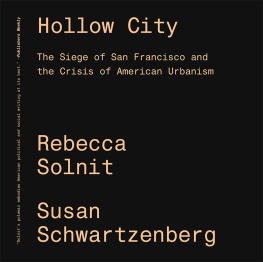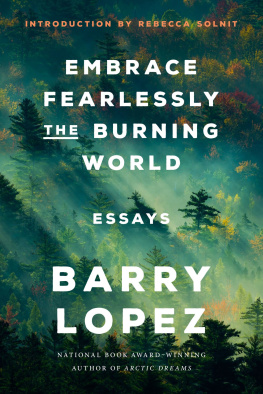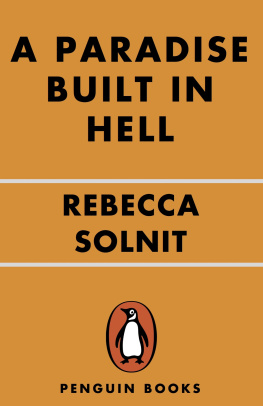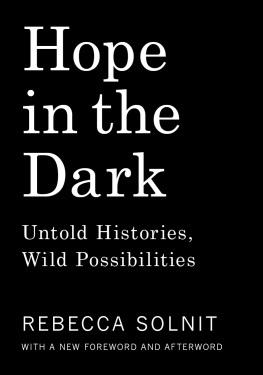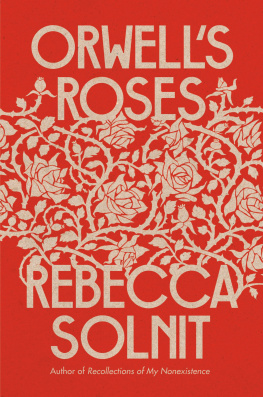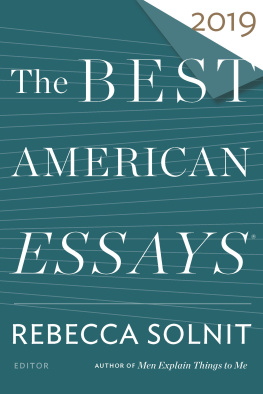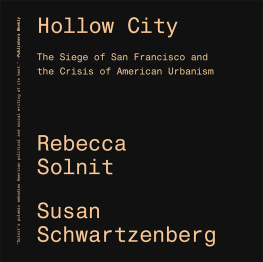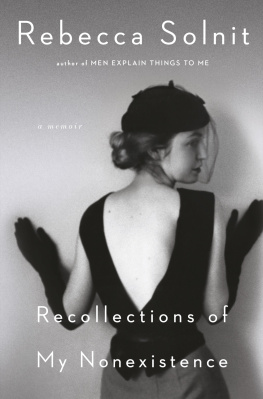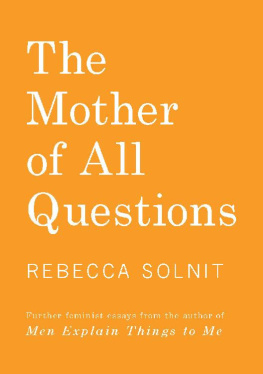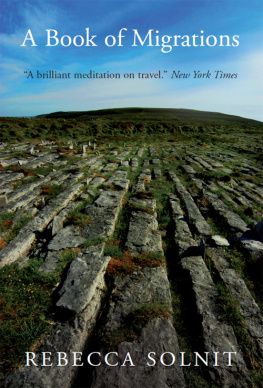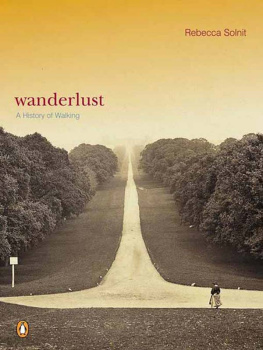Contents

HOLLOW CITY


HOLLOW CITY
The Siege of San Francisco and the
Crisis of American Urbanism

REBECCA SOLNIT
Text
SUSAN SCHWARTZENBERG
Photographs

The artworks on the following pages are copyright by the artists as indicated: Estate of Wallace Berman, 101; Sam Cherry, 96; Bruce Conner, 95; Jaime Cortez, Ren Garcia, John Leanos, Gerardo Perez, Monica Praba Pilar, 63; Janet Delaney, 50, 69, 70; Eric Drooker, 19; Connie Hatch, 71, 72, 73; David Johnson, 42, 45, 46, 47, 48; Kate Joyce, 13739; Ira Nowinski, 56, 57, 58, 59, 64, 65, 66, 67, 68; Rigo, 110; San Francisco Print Collective, v, 134, 146; C. J. Snyder, 109; Together We Can Defeat Capitalism, 122, 123, 130.
This paperback edition published by Verso 2018
Paperback edition first published by Verso 2002
First published by Verso 2000
Text Rebecca Solnit, 2000, 2002, 2018
Images Susan Schwartzenberg and the individual artists, 2000, 2002, 2018
All rights reserved
The moral rights of the authors have been asserted
1 3 5 7 9 10 8 6 4 2
Verso
UK: 6 Meard Street, London W1F 0EG
USA: 20 Jay Street, Suite 1010, Brooklyn, NY 11201
Verso is the imprint of New Left Books
ISBN-13: 978-1-78873-134-8
ISBN-13: 978-1-78873-135-5 (UK EBK)
ISBN-13: 978-1-78873-136-2 (US EBK)
British Library Cataloguing in Publication Data
A catalogue record for this book is available from the British Library
The Library of Congress Has Catalogued the Hardback Edition as Follows:
Solnit, Rebecca.
Hollow city : the siege of San Francisco and the crisis of American urbanism / Rebecca Solnit, text;
Susan Schwartzenberg, photographs
p. cm.
Includes bibliographical references (p.).
ISBN 1 85984 363 8 (paper)
1. GentrificationCaliforniaSan Francisco. 2. Urban poorCaliforniaSan FranciscoSocial conditions. 3. Working classCaliforniaSan FranciscoSocial conditions. 4. San Francisco (Calif.)Social conditions. 5. San Francisco (Calif.)Economic conditions. I. Schwartzenberg, Susan. II. Title.
HT177.S38 S65 2001
307.760979461dc2100-054982
Designed by Steven Hiatt and Susan Schwartzenberg
Printed and bound by CPI Group (UK) Ltd, Croydon CR0 4YY
Contents
dedicated to the artists and activists born in 2000
and
in memory of Frances Solnit Gallegos
East Los Angeles, July 31, 1937Sonoma County, March 24, 2000
bohemian, saboteur of bulldozers, supplier of books,
excellent aunt
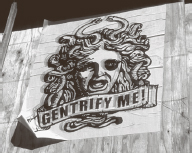
Hollow City was written and published in a rush, and it now depicts a crisis in amber, a portrait of the perils of a boom economy useful to recall even in a bust one. While nearly everyone expected the tech boom to subside, it did so sooner, faster, harder than anticipated, and the global economy followed. But the real estate boom is still with usprices have slipped slightly, sale and rental real estate stays on the market longer, but prices are still so much higher than they were only a few years before that they have effectively gated San Francisco (and the same conditions are arising or expanding in other cities, from Dublin, Ireland to Chicago, Illinois). The majority of artists and activists survived the last boom, but the circumstances for generating future generations of such activists and artists here look bleak. Theres good news too, though. The boomtime crisis roused the rabble who are more than and more amorphous than the progressive community, and they elected the most radical Board of Supervisors in the citys history. The new supervisors immediately set about implementing some of the best ideas for protecting the citys economic and cultural diversity, reforming the corrupt planning commission, and otherwise cleaning house, and with that Mayor Willie Browns reign was finally challenged.
Sometimes I myself think I was too much of an alarmist when I wrote Hollow City, but it is an accurate picture of the time, when there seemed no end to the loss. And after all, the good news amounts to this: the amputation didnt take the whole limb; the city limps on. Sometimes I remember how dramatic that loss was when I recall all the many nonprofits that folded for lack of affordable space or cracked under the strain of huge rents and all the people who left. Aaron Noble and Marisa Hernandez () and his family still live there, but their security has been undermined. Countless others are gone. How do you calculate the costs of such insecurity, of all the time and calm gnawed away by real estate speculation?
More than a portrait of a crisis, I hope Hollow City stands as a portrait of the complex social interconnections that make a city matter, interactions that include artists, activists, the poor, the middle class, public places and institutions, collective and individual memory and much, much morein other words, of the interplay between imagination and urban space. The books readers were often positive but the reviewers, particularly those from the region traditionally known as the left, were often scathing. Over and over again we were chastised for defending artistsor I was, since almost without exception these hostile reviews neglected to note Susan herself and the many other artist-activists and artist-historians and community artists represented in this books 170 images and who would have undermined their assertions about art as a disengaged luxury good (and they ignored the books definition of art as including all media to excoriate visual artists alone). The ever-popular story goes that artists move into an area and gentrify it, by making it so attractive the affluent follow them, and there goes the neighborhood. As a Yale-based spokesman for the masses put it in a progressive magazine, Solnit is reluctant to blame artists for gentrification.
Blaming artists for gentrification seemed to be easier than addressing the complex market forces that affect a neighborhood or recognizing the diverse roles artists play in their communities. But what bothers me most about this story is that, in the guise of deploring the white middle class, it secretly celebrates the white middle class by suggesting that only members of that group are artists. The story is more complicated, and thereby richer. The first artists we depicted in words and images were the musicians of the St. John Coltrane African Orthodox Church, who were evicted from their inner-city storefront church after twenty-nine years and have yet, eighteen months later, to find another home. They were exemplary artists and activists: keeping alive the jazz tradition that had otherwise been uprooted by the 1960s urban renewal in the center of the neighborhood where they played and prayed, feeding the homeless, and making avant-garde music into an accessible spirituality.

